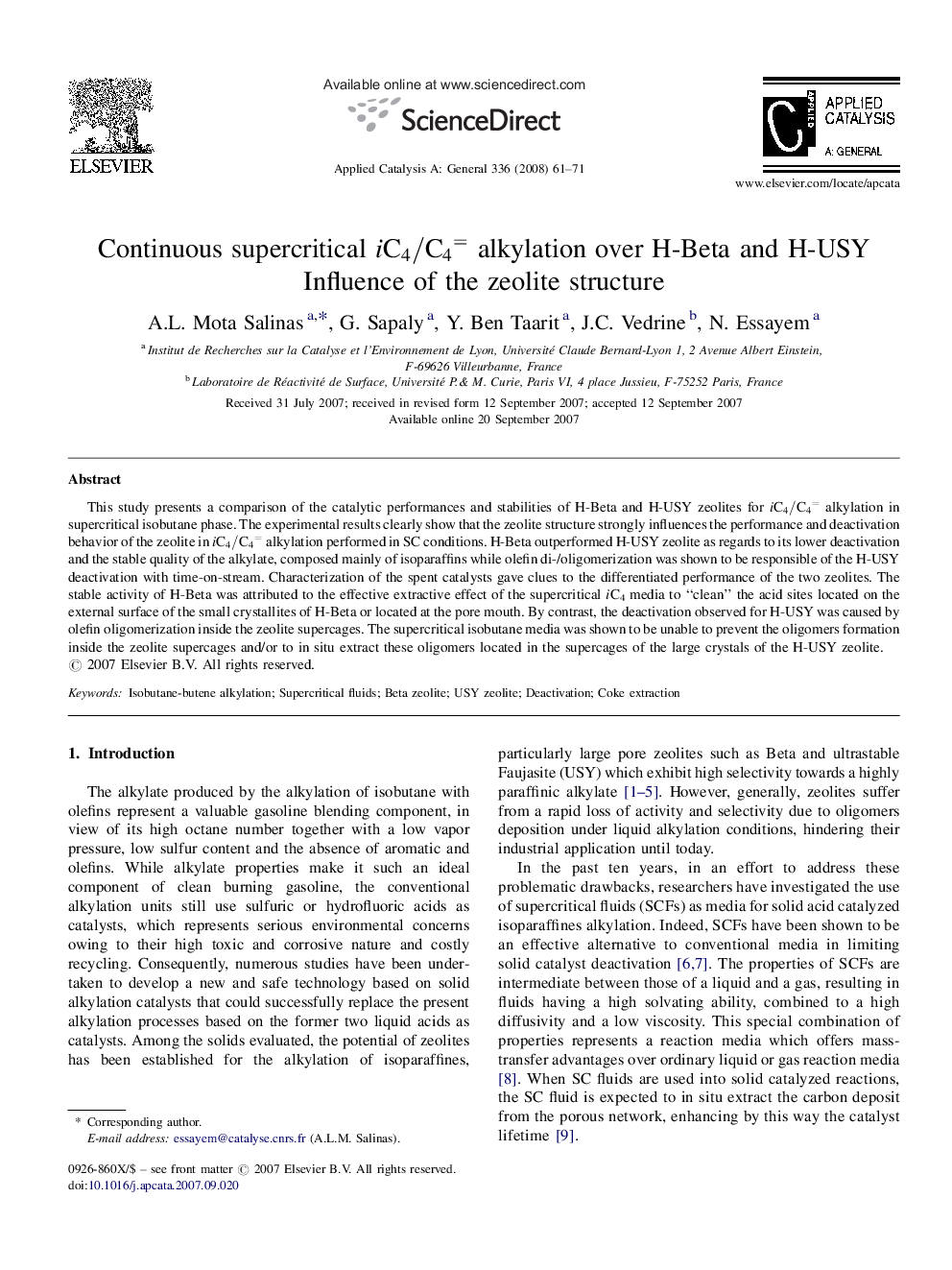| Article ID | Journal | Published Year | Pages | File Type |
|---|---|---|---|---|
| 43405 | Applied Catalysis A: General | 2008 | 11 Pages |
This study presents a comparison of the catalytic performances and stabilities of H-Beta and H-USY zeolites for iC4/C4=iC4/C4= alkylation in supercritical isobutane phase. The experimental results clearly show that the zeolite structure strongly influences the performance and deactivation behavior of the zeolite in iC4/C4=iC4/C4= alkylation performed in SC conditions. H-Beta outperformed H-USY zeolite as regards to its lower deactivation and the stable quality of the alkylate, composed mainly of isoparaffins while olefin di-/oligomerization was shown to be responsible of the H-USY deactivation with time-on-stream. Characterization of the spent catalysts gave clues to the differentiated performance of the two zeolites. The stable activity of H-Beta was attributed to the effective extractive effect of the supercritical iC4 media to “clean” the acid sites located on the external surface of the small crystallites of H-Beta or located at the pore mouth. By contrast, the deactivation observed for H-USY was caused by olefin oligomerization inside the zeolite supercages. The supercritical isobutane media was shown to be unable to prevent the oligomers formation inside the zeolite supercages and/or to in situ extract these oligomers located in the supercages of the large crystals of the H-USY zeolite.
Graphical abstractThe catalytic activities of H-Beta and H-USY zeolites were compared for iC4/C4=iC4/C4= alkylation in SC iC4 phase. The zeolite structure was shown to strongly influence the performance and deactivation behavior of the zeolite. H-Beta outperformed H-USY zeolite as regards to its lower deactivation and the stable quality of the alkylate. The sustainable activity of H-Beta in SC iC4 was attributed to its large external surface area where the effect of the SC Fluid is indisputably efficient to prevent the site poisoning by carbonaceous accumulation. By contrast, SC iC4 was shown to be unable to prevent or extract carbon deposits located in the supercages of H-USY.Figure optionsDownload full-size imageDownload as PowerPoint slide
